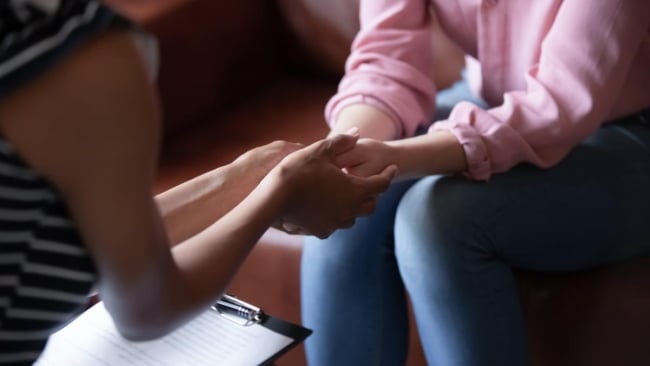You have /5 articles left.
Sign up for a free account or log in.

fizkes/iStock
The past year has seen an increased focus on mental health and well-being, as students and faculty have undergone immense stress during the pandemic.
But although some graduate students have tried to bring attention to it, their mental health has escaped more dedicated focus from administrations. A new report from the Council of Graduate Schools and the Jed Foundation now finds that while graduate students face unique mental health and well-being challenges, they are underrepresented in research and in campus messaging. One recent study suggested that one-third of graduate students report symptoms consistent with post-traumatic stress disorder, anxiety or depression. But in a CGS and Jed survey of institutions, only 58 percent said they had a model, framework or plan to promote the mental health and well-being of graduate students.
Suzanne Ortega, CEO of CGS, said the fact that graduate students are fewer in number than undergraduates likely plays a role in that. The makeup of the population, which is generally older than undergraduates, may also play a part.
“A significant minority of graduate students are international students about whom there are both stereotypes and assumptions about their resiliency and their work role,” Ortega said.
Graduate students are diverse in many ways, so their challenges are likely to be different and unequally distributed. Students of color, students with disabilities and low-income students may face increased obstacles during their graduate careers, leading to potential stress and sadness.
The wellness issues graduate students face can be brought on or exacerbated by a hypercompetitive environment, especially in disciplines where students and faculty are judged by their publishing and grant funding. Graduate students may need support from faculty, but getting faculty to model work-life balance and healthy boundaries may mean also changing conditions for professors.
“I think we need to look at the entire system,” said Nance Roy, chief clinical officer at the Jed Foundation. “If we want faculty to acknowledge that students have whole lives, then we need to acknowledge that so do faculty and staff.”
Ortega said presidents and funding agencies can help this effort by re-evaluating how they judge success.
“This is absolutely the time when funding agencies, when university presidents and governing boards at universities really need to ask the question, ‘Is the only way we can judge ourselves highly productive and high-quality by measures that count up the number of publications and number of dollars we’ve secured without also exploring how much of that work has really had a significant impact on the discipline and at least as importantly on the broader community?’” she said.
The CGS and Jed report also emphasized the importance of including graduate students in designing the programs and messaging that target them. Task forces that are ineffective can put a burden on graduate student time, but ones that are well structured and given real power can create real change, authors said.
Susanna Harris, CEO of PhD Balance, an online platform for students to talk about mental health struggles, said that administrators should be thoughtful about whom they place on committees and task forces. Often people who show up to meetings are the people with the most time and resources to expend, which can lead to a homogeneity of white, cisgender women.
“If you have four grad students at a table, that’s better than zero, but they don’t represent everybody,” she said. “Leverage these other communities that exist. Go to your diversity and inclusion office and have them put out the post. Go to your LGBTQ office and have them put out the post.”
Administrations should also be mindful of how they talk about and discuss mental health and well-being, said Barry Schier, director of the University Counseling Center at the University of Iowa. Students may be having problems more with their general well-being, which does not mean anything is wrong with them.
“As soon as we start saying, ‘depression’s up, anxiety’s up,’ we communicate in sort of a larger heuristic way that the problem is the student,” he said. “It may be a reasonable response to what’s in front of us rather than a pathological or disordered response to what’s in front of us.”
Schier said students who are feeling sad may not be experiencing a mental health disorder but could be reacting appropriately to a difficult situation. He gave the example of a faculty member who said they were worried about a student who was in their office crying, explaining that they thought the student might need to speak with someone from the counseling center. The student’s mother had just died.
“Do not send that student to the counseling center. Nothing’s wrong with them, they’re just sad. They may need to just talk to someone they know, which could be you,” he said. “As soon as you send them here, you tell them something is wrong and they need help.”
CGS’s statement of values and principles includes commitments to actions such as creating a campuswide consultative body on the mental health and well-being of graduate students. So far, 157 universities have signed on.




